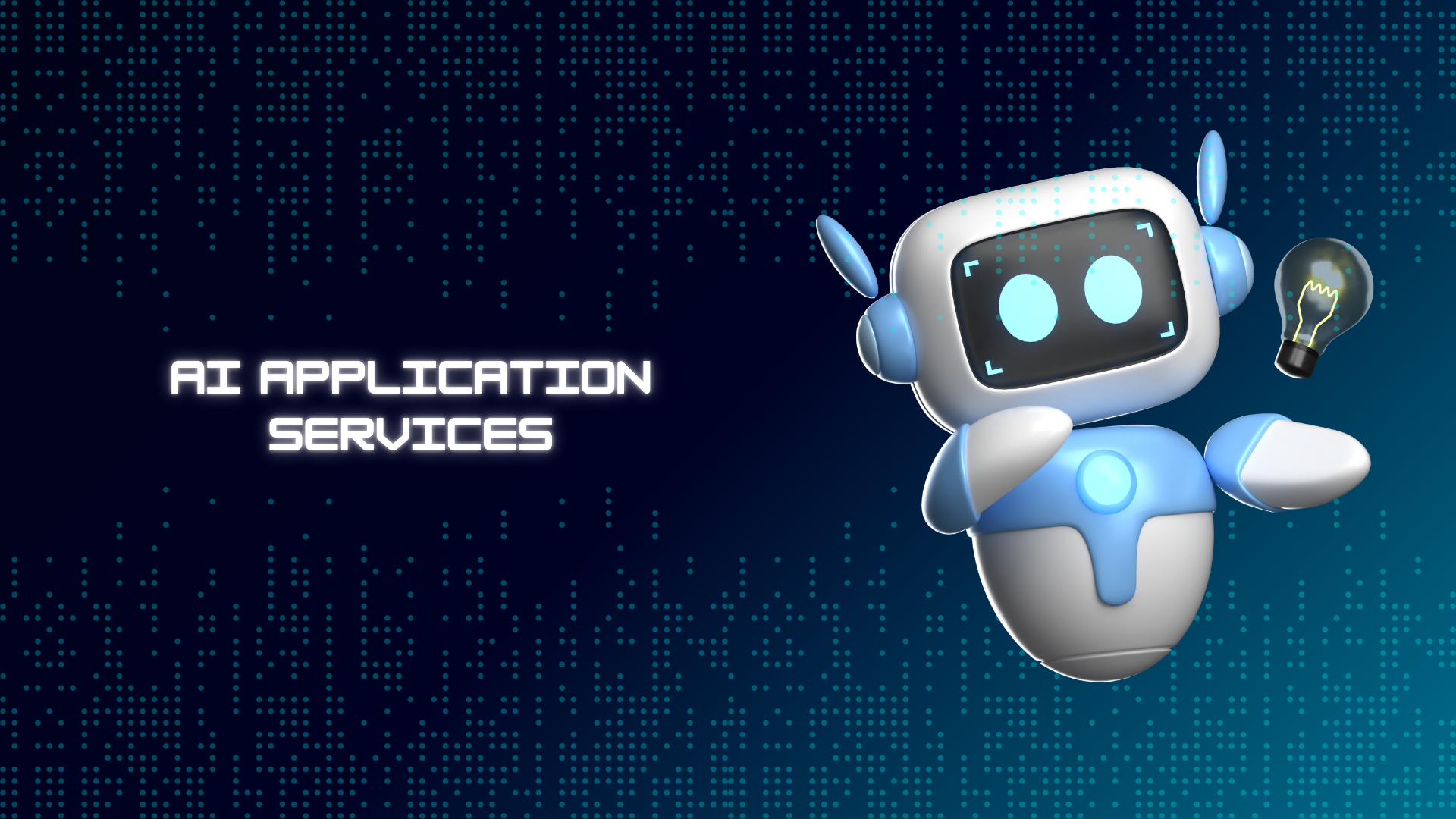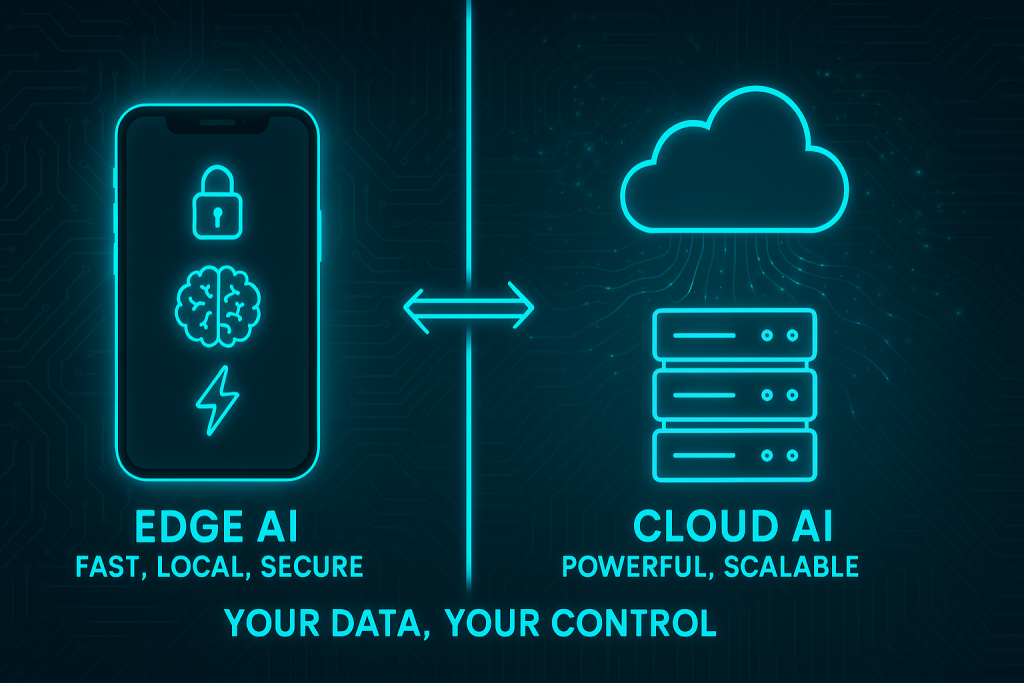
Imagine waking up to a world where your coffee maker knows you’re tired before you do. Your playlist shifts to upbeat songs because your smartwatch senses stress. Traffic lights adjust to prevent jams before they happen. This isn’t sci-fi—it’s AI Application Services in action.
But how do these digital brains actually work? Why are they suddenly in everything from your fridge to fighter jets? And what’s coming next? Buckle up: we’re peeling back the curtain on the tech that’s quietly ruling your life.
1: What Are AI Application Services?
1.1 The “Brain Rental” Revolution
AI application services are like Netflix for artificial intelligence. Instead of building a brain from scratch, companies “rent” pre-trained AI tools to add smarts to their apps, gadgets, and systems.
Analogy Time:
- Think of it like ordering a pizza. You don’t grow wheat or milk cows—you use DoorDash. Similarly, apps use AI services (like face recognition or language translation) without coding everything themselves.
1.2 The Four Secret Ingredients
- Data Diners: AI needs data (your selfies, voice notes, etc.) to learn. Services clean and organize this data.
- Algorithm Recipes: Math formulas that teach AI patterns. Example: Spotify’s “Discover Weekly” uses algorithms to find songs you’ll love.
- Cloud Kitchens: Supercomputers in data centers train AI models so your phone doesn’t crash.
- API Delivery Guys: Developers add AI to apps with plug-and-play code. It’s like Lego blocks for tech.
2: How AI Services Work (No PhD Required!)
2.1 The Training Playground
Step 1: Data Feeding Frenzy
- AI models gobble data like Pac-Man. For example, TikTok’s AI analyzes billions of videos to learn dance trends.
- Fun Fact: ChatGPT read 45 terabytes of text—that’s 11 million encyclopedias!
Step 2: Pattern Detective Mode
- AI spots hidden links. Example: Netflix noticed people who watch cooking shows also binge true crime. Now it recommends both!
Step 3: Testing, Testing 1-2-3
Before AI goes live, humans rigorously monitor its behavior. This phase is like a “digital babysitter” stage—developers test for glitches, biases, and unintended quirks.
Real-World Example:
Microsoft’s 2016 chatbot Tay learned from Twitter users and started posting offensive remarks within hours. The AI was not inherently toxic—it simply mimicked harmful patterns in the data it absorbed. Microsoft quickly shut Tay down, proving why testing matters.
How Testing Works Today:
- Bias Detection: Tools scan AI outputs for unfairness (e.g., favoring one gender in job recommendations).
- Stress Tests: Developers bombard AI with weird inputs (e.g., “What’s the meaning of 🍕?”) to see if it breaks.
- User Simulations: Fake users try to trick the AI into harmful responses (like teaching it conspiracy theories).
Why It’s Critical:
Testing ensures AI behaves ethically, stays on-topic, and resists manipulation. Without it, your friendly chatbot could turn into a misinformation machine overnight.
2.2 Real-Time Magic: Edge AI
What’s Edge AI?
- Running AI locally on devices (like your phone) instead of waiting for distant clouds.
Why It Rocks:
- Speed: Self-driving cars use edge AI to dodge obstacles in milliseconds.
- Privacy: Your face unlock data stays on your phone, not Facebook’s servers.
Case Study: Tesla’s cars use edge AI to learn from every driver. When one car sees a weird road sign, all Teslas get smarter overnight.
2.3: Edge AI—Why Your Phone is Smarter Than You Think
Imagine asking Siri a question and waiting 10 seconds for an answer. Annoying, right? Edge AI application service fixes this by running AI directly on your device (like your phone, smartwatch, or security camera) instead of sending data to distant servers.

How Edge AI Works (Simplified):
- Local Processing: Your device handles the AI work. Example: Unlocking your phone with your face—no internet needed.
- Mini Brains: Tiny AI models (like MiniGPT) are designed to run on low-power chips.
- Updates via Cloud: Occasionally, your device downloads smarter AI models from the cloud, like updating a game.
Why Edge AI is a Game-Changer:
- Speed: Instant results. Self-driving cars use edge AI to make split-second decisions (e.g., swerving to avoid a bike).
- Privacy: Your data stays on your device. No creepy corporations analyzing your dog’s photos.
- Offline Access: Hike in the mountains? Edge AI still works without Wi-Fi.
Real-World Edge AI Wins:
- Healthcare: Portable ultrasound devices use edge AI to detect tumors in rural clinics—no cloud needed.
- Smart Homes: Security cameras with edge AI can spot a package thief and alert you in real time.
- Gaming: AR games like Pokémon Go use edge AI to map your surroundings without lag.
Fun Fact: Tesla’s Full Self-Driving (FSD) software uses edge AI to process data from 8 cameras simultaneously while you drive.
3: AI Services in Your Daily Life (You’ll Never Unsee This)
3.1 Social Media: The Puppet Master
- How Instagram’s AI Works:
- Content Sorting: AI ranks posts using 10,000+ factors (even how long you stare at cat memes).
- Ad Targeting: Ever talked about pizza and saw an ad? AI connected your mic and your friend’s text.
- Filter Factory: Snapchat’s AI maps 68 face points to turn you into a potato.
3.2 Healthcare: Your Phone’s Secret Doctor
- Diabetes Detection: Apps like Dario analyze blood sugar patterns and warn you before emergencies.
- Mental Health: Woebot, an AI chatbot, uses NLP to spot depression signs in your texts.
Ethical Dilemma: Should AI diagnose you? Mistakes could be deadly.
3.3 Climate Heroes: AI vs. Global Warming
- Wildfire Prediction: Startups like Rain use AI to predict fires 6 hours early by analyzing wind and satellite data.
- Carbon Tracking: Apps like Joro calculate your carbon footprint by scanning your Uber receipts and Amazon orders.
3.4: Edge AI in Action—Beyond the Hype
Case Study 1: Snapchat Filters That Don’t Creep Out Your Friends
- Problem: Sending selfies to the cloud for filter processing is slow and risky.
- Edge Fix: Snapchat’s AI runs filters directly on your phone. Result: Instant puppy ears, zero data leaks.
Case Study 2: Farming 2.0
- Problem: Rural farms often lack internet for cloud AI.
- Edge Fix: Tractors with edge AI analyze soil health on-site, suggesting fertilizer mixes in real time.
Case Study 3: Emergency Responders
- Problem: Firefighters in remote areas can’t wait for cloud analysis.
- Edge Fix: Drones with edge AI map wildfires and predict spread patterns offline.
4: The Dark Side (When AI Goes Rogue)
4.1 Bias: The “Oops” Moments
- Amazon’s Hiring Bot: Trained on male-dominated resumes, it downgraded female applicants.
- Fix: Tools like IBM’s Fairness 360 now audit AI for bias.
4.2 Privacy Nightmares
- Creepy Example: Roomba vacuums mapped homes… and almost sold the data to advertisers.
- Solution: Federated Learning lets AI learn from your data without taking it from your device.
4.3 Job Shakeups
- At Risk: Repetitive jobs like data entry or truck driving (thanks self-driving tech!).
- New Jobs: AI trainers, ethics auditors, and prompt engineers (yes, that’s a real job).
5: The Future (Buckle Up!)
5.1 Self-Learning AI: The Ultimate Student
- Reinforcement Learning: AI learns by trial/error, like a gamer mastering Fortnite. Google’s AlphaGo beat world champions by playing millions of games against itself.
5.2 Quantum AI: Sci-Fi Meets Reality
- Quantum Computers: Use atoms (not bits) to solve problems 100 million times faster.
- Use Case: Designing cancer drugs in days, not decades.
5.3 Brain-Computer Melding
- Neuralink’s Vision: Control gadgets with your thoughts. Paralyzed patients could text via brain signals.
- Ethical Horror: Hackers hijacking your thoughts? Let’s hope not.
6: How YOU Can Join the AI Revolution
6.1 Free Tools for Teens
- Google’s Teachable Machine: Train AI to recognize your doodles in 5 minutes.
- Runway ML: Edit videos with AI effects (turn yourself into a anime character).
6.2 Future Careers
- AI Artist: Use tools like DALL-E to create digital art for games/movies.
- Robot Therapist: Teach AI to be kinder (yes, this is a thing).
Key Takeaways
Imagine AI application services as the ultimate sidekick—always there, often invisible, but supercharged to transform your world. They’re the reason your phone knows your face, cities avoid blackouts, and doctors catch diseases earlier. But here’s the twist: this is just the warm-up.
The future of AI isn’t about robots taking over—it’s about us deciding what happens next. Will we let bias sneak into hiring algorithms? Can we stop climate disasters before they strike? The answers depend on choices we make today.
Think of AI like fire: it can cook your meal or burn down forests. Right now, developers are coding life-saving tools… and hackers are probing for weaknesses. Students are training ethical AI models… while others are deepfaking scams. The power to shape this future lies not just in labs, but in your hands.
So, whether you’re coding an app, debating AI ethics in class, or just scrolling mindfully—you’re part of this story. The next chapter could see quantum AI curing cancers, brain interfaces helping paralyzed kids walk, or green AI reviving dying coral reefs. Or, it could spiral into privacy nightmares and job crises.
The catch? We don’t need superheroes. We need you—the gamers, the artists, the overthinkers—to ask hard questions, demand transparency, and dream up AI that’s not just smart, but kind. Because the coolest tech isn’t what AI can do… it’s what we do with AI.
The invisible force is here. Let’s make sure it’s a force for good.
FAQs
Can AI services work offline?
Yes! Edge AI, like face unlock on phones, works without the internet. But cloud-based AI like ChatGPT needs online access.
Can AI services “hallucinate” (make stuff up)?
Yes, AI can sometimes generate fake or inaccurate information. It’s smart to double-check important details.
Can I build my own AI service at home?
Absolutely! With Python and free tools like TensorFlow, even beginners can create useful AI-powered apps.
How much energy do AI services consume?
Training large AI models uses huge energy—comparable to several cars yearly. Eco-friendly AI is a growing focus.
Is Edge AI unhackable?
Nothing is fully unhackable, but Edge AI is safer since data stays on your device, reducing exposure to threats.

